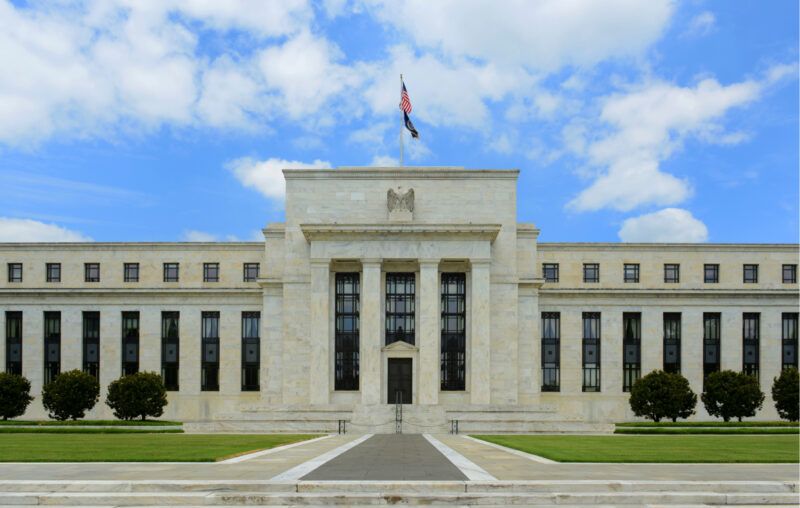The Complexity of Monetary Policy and the Effectiveness of the Fed’s Commitment to a Higher Rate of Inflation

Markets are not convinced that the Federal Reserve will live up to its new average inflation target. Expected annual inflation is around 1.8%, depending on the measure employed. An expected inflation rate of close to 2% indicates that investors don’t think the Fed is sitting on its hands, but neither does it indicate that they have fully bought into the Fed’s commitment to allow the rate of inflation to rise above 2%.
The Fed might say that it is committed to a policy new regime, but it has failed to explain how it will accomplish its new target. Some observers, perhaps depending on recent observation, cannot imagine how the Federal Reserve could use its usual tool for setting monetary policy – the federal funds rate target – to generate inflation. The Federal Reserve’s unwillingness to take certain forms of policy implementation off the table is not helping the Federal Reserve nurture higher inflation expectations.
In particular, the Federal Reserve has not explicitly adopted a framework for managing the rate of interest paid on excess reserves relative to the upper and lower limits of the federal funds rate target. Jerome Powell had, for a time, lowered the rate of interest paid on excess reserves to the point of being below the effective federal funds rate. With the onset of an economic downturn, the federal funds rate fell to as low as 0.05% and stands at 0.09%, below the rate of 0.1% paid on excess reserves. In other words, it is more profitable to lend to the Fed at zero risk than it is to lend funds overnight to financial institutions.
Despite having lowered the rate paid on excess reserves below the upper limit of the federal funds target, payment of interest on excess reserves continues to complicate monetary policy by providing a higher return than the relevant alternative of overnight lending. Powell has not committed the Federal Reserve to a policy that would ensure that the Fed’s payment of interest on excess reserves will remain below the federal funds rate target.
This is problematic for at least two reasons. First, an unwillingness for the Federal Reserve to commit to a positive spread between these two rates implies to investors that the Federal Reserve is not serious about promoting a higher average rate of inflation. If it was, it would commit to removing the option from its set of potential policies.
Second, and less obvious, the Federal Reserve has not clarified that the discrepancy between the federal funds target and the rate paid on excess reserves is itself a policy instrument that can be used to influence inflation expectations and, indirectly, nominal interest rates that reflect inflation expectations.
Policymakers have reason to resist reducing the complexity of available policy options. Fed officials do not want to limit the array of means available for policy implementation. The future is uncertain. Who knows what policy instruments will best aid the Federal Reserve in attaining its particular inflation target and overarching goals of maintaining a modest level of inflation and promoting low levels of unemployment? Refusal to limit one’s means, however, might also limit the range of ends one might pursue. A growing variety of options for policy implementation makes the path of monetary policy more difficult to predict.
Fed officials might also prefer that the structure of monetary policy obscures clarity of its operations to observers. The current system increases support for the U.S. Treasury and allocates credit to particular financial sectors. If these aspects of the system were clarified, the public might react with widespread disapproval.
Whatever the case, Powell has not formally declared an end to the floor system. He leaves open the possibility that the rate paid one excess reserves and the upper limit of the federal funds target might return to equality; a policy that could stymie inflation. Even with the rate of interest paid on excess reserves below the upper limit of the federal funds target, the movement over the last year of the effective federal funds rate below the rate paid on excess reserves has returned the current policy regime to a floor system.
The Fed’s current policy prevents reserves that might otherwise end up supporting overnight lending from entering the financial system. This inversion tends to move the risk-free rate of interest paid on excess reserves upward relative to rates paid on lower yielding assets, including short-term U.S. Treasuries. In fact, the rate paid on 1-month U.S. Treasuries is currently 0.08%, less than the rate paid on excess reserves. Conversely, an increase in the gap between the federal funds rate and the rate paid on excess reserves tends to encourage investment of funds that would otherwise be held on reserve at the Fed.
If the Federal Reserve explicitly tied its hands to ensure that the rate paid on excess reserves remains below the effective federal funds rate, or better still, identified a minimum distance to be maintained between them, then investors might be more willing to believe that the Federal Reserve is committed to maintaining a higher average rate of inflation. To fight inflation, the Federal Reserve would then only be able to rely on increases in the federal funds target. While this would limit future courses of action for the Federal Reserve, it would provide market participants with clearer expectations concerning the scope of future policy. They would be more likely to take seriously the inflationary dimension of a commitment to lower interest rates recently announced by Jerome Powell. Without explicit identification of policy governing the rate of interest paid on excess reserves, investors can anticipate that this discrepancy can be manipulated in a manner that mutes the inflationary effects of a low interest rate policy.
The increasing complexity of monetary policy’s structure provides the policymakers at the Fed much liberty while increasing the opacity of operations. The more instruments available to implement policy, the greater the likelihood that supposedly inflationary policies can be offset through subtle means that are difficult to perceive. There are many means for the Fed to implement policy. These include lending to other central banks, lending directly to borrowers on “Main Street,” and auctioning off credit to institutional borrowers, to name only a few. And policymakers are adept at dreaming up new ways to implement monetary policy.
Yet a major responsibility of policymakers is to help market participants form clear expectations about future policy. The increasing opacity of operations works in opposition to this obligation. Simplification of the Federal Reserve’s framework would go a long way toward helping investors form more accurate expectations concerning monetary policy’s implementation and its effects.
It is not clear that the expanded domain of operations has improved monetary stability in comparison to the regime that preceded it. The monetary policies of Greenspan and Volcker used a simple framework to lower inflation expectations. Under these regimes, changes in the federal funds target had a clear meaning with regard to inflation expectations. If Powell and the Federal Reserve Open Market Committee want the market to take the commitment to a higher average rate of inflation seriously, they should commit to decreasing policy complexity.
Finally, it is possible that the Fed achieves its average inflation target, only convincing investors of the strength of its commitment after the fact. While even this would represent some success for the Fed, it would amount to a broader monetary policy failure. Average inflation targeting is intended to lift inflation expectations now, so as to also increase nominal rates and move lending volumes and economic activity back to the level and trend that preceded the crisis.
A better policy would be to bring greater clarity to the structure and effects of the Fed’s policy framework so as to improve the quality of investor expectations. So long as investors feel that they might as well be reading tea leaves to predict Fed policy, the Fed will struggle to anchor investor expectations of nominal and real income growth.










